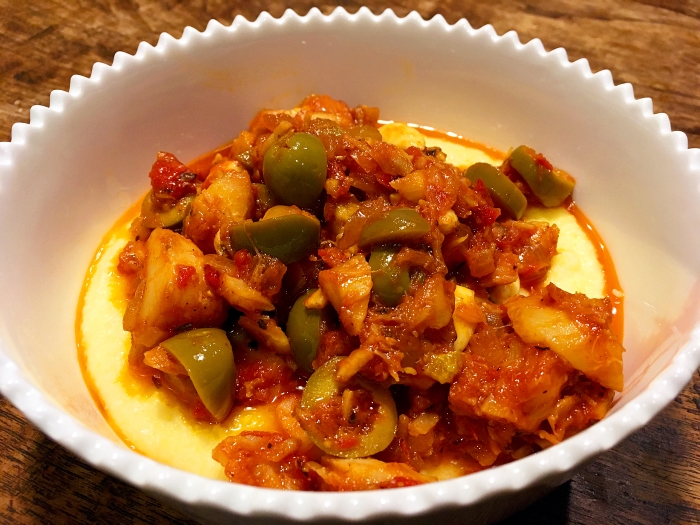By Joe Dizney
For such a globally embraced culinary staple, salt cod is sometimes a tough sell for a culture such as ours enamored of “freshness.”
An innovation of European exploration and discovery in the northwestern Atlantic, salt cod is the result of plentiful populations of a sought-after fresh seafood.
Coupled with one of the oldest known methods of preservation, drying, salted codfish has a shelf life of several years, although I would advise looking for fresher stock. The process not only preserves the nutritional value and texture of this firm, white fish, but also somehow makes it tastier, due almost certainly to the ample salt.
Cod and salt both contributed mightily to a burgeoning world economy and their stories make for entertaining history in Mark Kurlansky’s Cod: A Biography of the Fish that Changed the World and Salt: A World History.
Due to the seemingly limitless supply of Newfoundland cod, by the mid-16th century, about 60 percent of all the fish consumed in Europe was cod. Brits salted and dried it to establish a year-round market, hence the British epithet, “winter fish.” Salt cod made its way back to Europe and was embraced by the French, Spanish and Portuguese. From there it was further passed on to the West Indies, supplying island staples such as Jamaican ackee and salt fish.
In the New World, salt cod remains a Mexican staple, particularly on Christmas Eve, where it appears dressed in a spicy tomato sauce with almonds and green olives, after a Spanish antecedent which included cured ham and dried chilies.
Notes about prep: I secured salt cod through Marbled Meats in Philipstown but have seen it in one- and two-pound boxes in supermarkets. Be sure to thoroughly soak and rinse the fish and note that no additional salt should be added until tasting near the end.
Also, you can buy blanched almonds but usually will only find them slivered. Blanching your own is a simple process. The advantage is textural because they become almost giant pignolis. As for green olives, almost any will do, but look for Spanish Manzanilla or Gordal varieties.

Winter Fish Biscayan
Serves 4 to 6
1 pound salt cod (soaked and rinsed)
½ cup whole raw almonds, blanched
½ cup olive oil
2 medium onions, chopped medium
3 cloves garlic, minced
½ cup cured ham such as Serrano or guanciale, diced (optional)
¼ teaspoon ground cloves
¼ teaspoon ground black pepper
½ teaspoon dried marjoram
½ teaspoon dried thyme
1 14.5-ounce can chopped tomatoes in juice (Muir Glen organic fire-roasted chopped tomatoes are best)
½ cup cured and pitted green Spanish or Italian olives, chopped roughly
2 tablespoons chopped, pickled jalapeno peppers, plus 2 tablespoons of the pickling juice
Cooked rice, potatoes or polenta for serving
- Soak cod in a large bowl of cold water, refrigerated, for 8 to 12 hours, draining and changing water at least five times. Cover cod with cold water, breaking it apart into large chunks. Pick through to remove any skin or bones and drain again.
- While soaking cod, blanch almonds for 1 minute in rapidly boiling water. Drain and rinse in cold water to cool. Drain and dry on paper towels until dry. Peel off loose skin and reserve.
- Put drained and flaked cod into a medium pot, cover with cold water, and boil over medium-high heat until tender (about 15 minutes). Drain and set aside.
- Heat oil in a large skillet over medium-high heat. Add onions and garlic (and ham, if using). Cook, stirring often, for 10 minutes until onions are cooked through. Add cloves, pepper, marjoram and thyme, cooking and stirring for 2 minutes. Add tomatoes, lower heat and cook for another 10 to 15 minutes. Add cod, increasing heat to medium. Cook, stirring and breaking fish up often for about 10 to 15 minutes. Add almonds and olives, cooking until just heated through (about 2 to 3 minutes). Remove from heat and stir in jalapenos and juice before serving over rice, potatoes or polenta.

